Top 10 Universities for Artificial Intelligence
1. Massachusetts Institute of Technology, Cambridge, MA
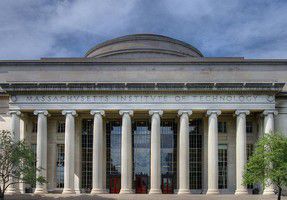
Massachusetts Institute of Technology is a private institution that was founded in 1861. It has a total undergraduate enrollment of 4,299, its setting is urban, and the campus size is 168 acres. It utilizes a 4-1-4-based academic calendar. Massachusetts Institute of Technology’s ranking in the 2012 edition of Best
Colleges is National Universities, 5. Its tuition and fees are $40,732 (2011-12).
MIT is located in Cambridge, Mass., across the Charles River from downtown Boston. Only freshmen students are required to live on campus, but about 70 percent of students choose to remain on campus during their four years. MIT offers housing in one of the coolest dorms in the country, commonly called “The Sponge,” designed by architect Steven Holl. The MIT Engineers boast more than 30 NCAA Division III Teams, and their mascot is a beaver, which MIT chose because of its “remarkable engineering and mechanical skill and its habits of industry.” Each class designs a unique ring called the “Brass Rat” that is revealed during sophomore year, a tradition that dates back to 1929.
MIT focuses on scientific and technological research and is divided into five schools and one college. Among its graduate schools are the highly ranked School of Engineering and Sloan School of Management, in addition to strong programs in economics, psychology, biology, chemistry, earth sciences, physics, and mathematics. Research expenditures at MIT for 2009 exceeded $700 million, with funding coming from government agencies such as the Department of Health and Human Services and Department of Defense. The “Independent Activities Program,” a four-week term between fall and spring semesters in January, offers special courses, lectures, competitions, and projects. Distinguished alumni include Apollo 11 astronaut Buzz Aldrin, former U.N. Secretary
General Kofi Annan, and Federal Reserve Bank Chairman Ben Bernanke.
2. Carnegie Mellon University, Pittsburgh, PA
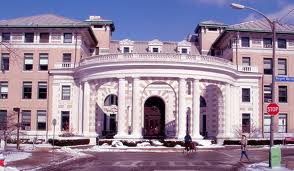
Carnegie Mellon University (also known as Carnegie Mellon or simply CMU) is a private research university in Pittsburgh, Pennsylvania.
The university began as the Carnegie Technical Schools, founded by Andrew Carnegie in 1900. In 1912, the school became Carnegie Institute of Technology and began granting four-year degrees. In 1967, the Carnegie Institute of Technology merged with the Mellon Institute of Industrial Research to form Carnegie Mellon University. The University’s 140-acre (0.57 km2) main campus is 3 miles (4.8 km) from Downtown Pittsburgh and abuts the Carnegie Museums of Pittsburgh, Schenley Park, and the campus of the University of Pittsburgh in the city’s Oakland and Squirrel Hill neighborhoods, partially extending into Shadyside.
Carnegie Mellon has seven colleges and independent schools: the Carnegie Institute of Technology (engineering), College of Fine Arts, Dietrich College of Humanities and Social Sciences, Mellon College of Science, Tepper School of Business, School of Computer Science, and H. John Heinz III College.
Carnegie Mellon students come from all 50 U.S. states and 93 countries. It consistently ranks among the top 25 universities in the United States and was named one of the “New Ivies” by Newsweek in 2006.
3. Stanford University, Stanford, CA
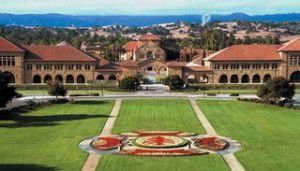
The Leland Stanford Junior University, commonly referred to as Stanford University or Stanford, is a private research university on an 8,180-acre (3,310 ha) campus located near Palo Alto, California. It is situated in the northwestern Santa Clara Valley on the San Francisco Peninsula, approximately 20 miles (32 km) northwest of San Jose and 37 miles (60 km) southeast of San Francisco.
Leland Stanford, a Californian railroad tycoon and politician, founded the university in 1891 in honor of his son, Leland Stanford, Jr., who died of typhoid two months before his 16th birthday. The university was established as a coeducational and nondenominational institution, but struggled financially after the senior Stanford’s 1893 death and after much of the campus was damaged by the 1906 San Francisco earthquake. Following World War II, Provost Frederick Terman supported faculty and graduates’ entrepreneurialism to build self-sufficient local industry in what would become known as Silicon Valley. By 1970, Stanford was home to a linear accelerator, was one of the original four ARPANET nodes, and had transformed itself into a major research university in computer science, mathematics, natural sciences, and social sciences. More than 50 Stanford faculty, staff, and alumni have won the Nobel Prize and Stanford has the largest
number of Turing award winners for a single institution. Stanford faculty and alumni have founded many prominent technology companies including Cisco Systems, Google, Hewlett-Packard, LinkedIn, Netscape Communications, Rambus, Silicon Graphics, Sun Microsystems, Varian Associates, and Yahoo!.
The university is organized into seven schools including academic schools of Humanities and Sciences and Earth Sciences as well as professional schools of Business, Education, Engineering, Law, and Medicine. Stanford has a student body of approximately 6,900 undergraduate and 8,400 graduate students.
Stanford is a founding member of the Association of American Universities and in 2010 managed US$1.15 billion in research funding and $13.8 billion in endowment support, with $21.4 billion in consolidated net assets.
Stanford competes in 34 varsity sports and is one of two private universities in the Division I FBS Pacific-12 Conference. Stanford’s athletic program has won the NACDA Directors’ Cup every year since 1995. In the 2008 Summer Olympics in Beijing, Stanford athletes won 25 medals, including 8 gold medals, more than any other university in the United States
4. University of California–Berkeley, Berkeley, CA
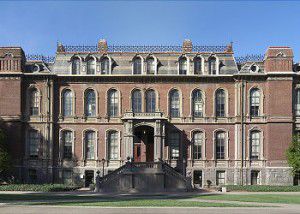
The University of California, Berkeley (also referred to as UC Berkeley, Cal Berkeley, Berkeley, or simply Cal), is a teaching and research university established in 1868 and located in Berkeley, California, USA. Berkeley is the most consistently well ranked university in the world overall as shown by a meta-analysis of subject/departmental data over the last sixteen years from the United States National Research Council, the US News & World Report, and Times Higher Education. Berkeley has the highest number of distinguished graduate programs ranked in the top 10 in their fields by the United States National Research Council. Among other honors, University faculty, alumni, and researchers have won 66 Nobel Prizes, 9 Wolf Prizes, 7 Fields Medals, 15 Turing Awards, 45MacArthur Fellowships, 20 Academy Awards, and 11 Pulitzer Prizes. To date, UC Berkeley and its researchers are associated with 6 chemical elements of the periodic table (Californium, Seaborgium, Berkelium, Einsteinium, Fermium, Lawrencium) and Berkeley Lab has discovered 16 chemical elements in total – more than any other university in the world.
UC Berkeley is the flagship institution of the University of California.[7][8][9][10] The university occupies 6,651 acres (26.92 km2) with the central campus resting on approximately 200 acres (0.81 km2) in the San Francisco Bay Area. Berkeley offers approximately 300 undergraduate and graduate degree programs in a wide range of disciplines. The oldest of the ten major campuses affiliated with the University of California (UC), Berkeley was the result of an 1868 merger of the private College of California and the public Agricultural, Mining, and Mechanical Arts College in Oakland. Since its founding, Berkeley has been charged with providing both “classical” and “practical” education for the state’s people.
5. University of Texas–Austin, Austin, TX
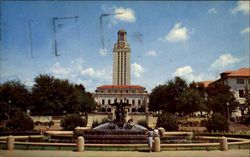
University of Texas–Austin is a public institution that was founded in 1883. It has a total undergraduate enrollment of 38,420, its setting is urban, and the campus size is 431 acres. It utilizes a semester-based academic calendar. University of Texas–Austin’s ranking in the 2012 edition of Best Colleges is National Universities, 45. Its in-state tuition and fees are $9,794 (2011-12); out-of-state tuition and fees are $32,506 (2011-12).
Everything is bigger in Texas, as the saying goes, and it holds true at the University of Texas—Austin, one of the largest schools in the nation. The school has one of the biggest Greek systems in the country, two of the largest student publications, and more than 900 clubs and organizations for students. The UT–Austin sports teams are notorious competitors in the Division I Big 12 Conference, supported by mascot Bevo the Longhorn. The UT Tower, a lofty campus structure, is lit in the school’s burnt orange color after notable sports achievements and glows a ‘#1’ when a team wins a national championship.
Freshmen do not have to live on campus, and may choose to live in downtown Austin, situated about a quarter mile away. The vibrant city is known for its music, food, outdoor activities, and nightlife, and students can travel for free on the capitol Metro buses with proof of ID.
UT is divided into 12 schools and colleges, the largest of which is the College of Liberal Arts. UT’s graduate programs include the highly ranked McCombs School of Business, College of Education, Cockrell School of Engineering, College of Fine Arts, School of Nursing, College of Pharmacy, and School of Social Work, in addition to the well-regarded School of Architecture. UT offers more than 650 study abroad programs, with the most popular destinations being Spain, Italy, the United Kingdom, France, and China. Notable alumni include former pitcher Roger Clemens, actor Matthew McConaughey of films The Wedding Planner and How to Lose a Guy in 10 Days, and former first lady Laura Bush.
6. University of Washington, Seattle, WA
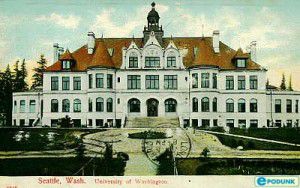
University of Washington is a public institution that was founded in 1861. It has a total undergraduate enrollment of 29,302, its setting is urban, and the campus size is 703 acres. It utilizes a quarter-based academic calendar. University of Washington’s ranking in the 2012 edition of Best Colleges is National Universities, 42. Its in-state tuition and fees are $10,574 (2011-12); out-of-state tuition and fees are $28,058 (2011-12).
Located in the heart of downtown Seattle, the University of Washington is a cutting-edge research university with a long-standing history as the first institution in the West. Students can join one of the school’s 500-plus student organizations, including 16 sororities and 27 fraternities, or can start a brand new club with at least four other students. University of Washington is known as a commuter school, and freshmen are not required to live on campus. Housing is not guaranteed for any student. For those that do reside in the residence halls, the university stresses “living green” through energy conservation and recycling. On the sports fields, the school’s varsity athletes are competitive in the NCAA Division I Pacific-10 Conference. The football team, in particular, is a traditional league stand-out. The teams are represented by two mascots: one, a costumed student known as Harry the Husky Dawg, and the other, Dubs, a live Alaskan husky.
The university gym is free for students seeking a workout.
The University of Washington receives a hefty amount of federal funding each year to further its mission as a public research institution. True to its roots in research, the school hosts an Undergraduate Research Symposium every year for students to present their work to the community. The school has a highly ranked School of Medicine, College of Engineering, and Michael G. Foster School of Business. Nearly three fourths of University of Washington graduates remain in the state. Notable alumni include Thomas Foley, former U.S. Speaker of the House; Chris DeWolfe, co-creator of MySpace; and Irv Robbins, co-founder and namesake of the Baskin-Robbins ice cream chain.
7. Georgia Institute of Technology, Atlanta, GA
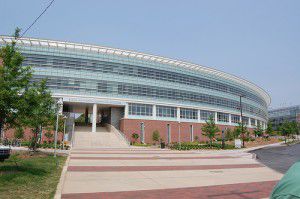
United States. It is a part of the University System of Georgia and has satellite campuses in Savannah, Georgia; Metz, France; Athlone, Ireland; Shanghai, China; and Singapore.
The educational institution was founded in 1885 as the Georgia School of Technology as part of Reconstruction plans to build an industrial economy in the post-Civil War Southern United States. Initially, it offered only a degree in mechanical engineering. By 1901, its curriculum had expanded to include electrical, civil, and chemical engineering. In 1948, the school changed its name to reflect its evolution from a trade school to a larger and more capable technical institute and research university.
Today, Georgia Tech is organized into six colleges and contains about 31 departments/units, with a strong emphasis on science and technology. It is well recognized for its degree programs in engineering, computing, management, the sciences, architecture, and liberal arts. Tech is consistently ranked as one of the top 10 public universities in the nation and is a member of the prestigious Association of American Universities.
8. University of Illinois–Urbana-Champaign, Urbana, IL
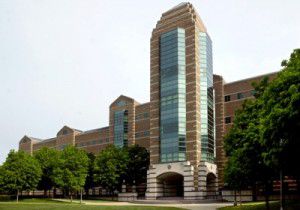
University of Illinois–Urbana-Champaign is a public institution that was founded in 1867. It has a total undergraduate enrollment of 31,540, its setting is urban, and the campus size is 1,468 acres. It utilizes a semester-based academic calendar. University of Illinois–Urbana-Champaign’s ranking in the 2012 edition of Best Colleges is National Universities, 45. Its in-state tuition and fees are $13,558 (2011-12); out-of-state tuition and fees are $27,700 (2011-12).
The University of Illinois is located in the twin cities of Urbana and Champaign in east-central Illinois, only a few hours from Chicago, Indianapolis, and St. Louis.
The school’s Fighting Illini participate in more than 20 NCAA Division I varsity sports and are part of the Big Ten Conference. The university boasts the largest Greek system in the world, and almost a quarter of the student body is involved. It’s not hard to find something to do on campus with more than 1,000 student organizations, ranging from the climbing club to the Chinese mahjong club. All freshmen are required to live on campus.
University of Illinois—Urbana-Champaign comprises 17 schools and colleges. Its Graduate School of Library and Information Science, College of Engineering, and Department of Psychology are among the best in the country. The school’s College of Business, College of Education, and College of Law are also highly ranked The school is classified as a university with very high research activity by the Carnegie Foundation for the Advancement of Teaching. The University of Illinois was the first school to provide disability access to all university services, curricula, and facilities. Notable alumni include Pulitzer Prize-winning film critic Roger Ebert, and John Bardeen, a two-time winner of the Nobel Prize in Physics.
9. University of Massachusetts–Amherst, Amherst, MA

University of Massachusetts–Amherst is a public institution that was founded in 1863. It has a total undergraduate enrollment of 21,373, its setting is suburban, and the campus size is 1,463 acres. It utilizes a semester-based academic calendar. University of Massachusetts–Amherst’s ranking in the 2012 edition of Best Colleges is National Universities, 94. Its in-state tuition and fees are $12,612 (2011-12); out-of-state tuition and fees are $25,400 (2011-12).
The University of Massachusetts—Amherst is the central location for the state school system. The university is large, but through the Five College Interchange, students can take courses at smaller liberal arts colleges nearby: Smith College, Mount Holyoke College, Amherst College, and Hampshire College. Students have close to 90 majors to choose from, including an option to design a major, known as BDIC: the Bachelor’s Degree with Individual Concentration. Adult students can complete a degree through a combination of online and on-campus coursework via the UMass Amherst University Without Walls (UWW).
10. University of Pennsylvania, Philadelphia, PA

The University of Pennsylvania (commonly referred to as Penn or UPenn) is a private research university located in Philadelphia, Pennsylvania, United States and is one of the eight members of the Ivy League. Penn is the fourth-oldest institution of higher education in the United States, and is considered the first university in the United States, with both undergraduate and graduate studies. It is also one of the Colonial Colleges. Incorporated as The Trustees of the University of Pennsylvania, Penn is one of 14 founding members of the Association of American Universities.
Benjamin Franklin, Penn’s founder, advocated an educational program that focused as much on practical education for commerce and public service as on the classics and theology. Penn was one of the first academic institutions to follow a multidisciplinary model pioneered by several European universities, concentrating multiple “faculties” (e.g., theology, classics, medicine) into one institution. It was also home to many other educational innovations. The first school of medicine in North America (University of Pennsylvania School of Medicine, 1765), the first collegiate business school (Wharton, 1881) and the first student union (Houston Hall, 1896), were all born at Penn.
Penn offers a broad range of academic departments, an extensive research enterprise and a number of community outreach and public service programs. It is particularly well known for its medical school, dental school, school of business, law school, communications school, nursing school, veterinary school, its social sciences and humanities programs, as well as its biomedical teaching and research capabilities. Its undergraduate programs are also among the most selective in the country (12.26% acceptance rate). One of Penn’s most well known academic qualities is its emphasis on interdisciplinary education, which it promotes through numerous joint degrees, research centers and professorships, a unified campus, and the ability for students to take classes from any of Penn’s schools (the “One University Policy”).